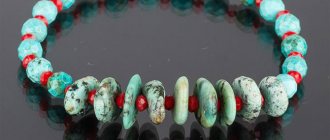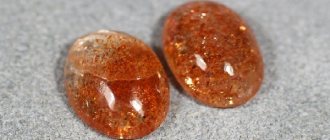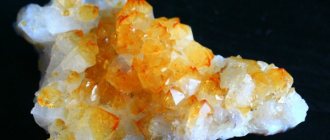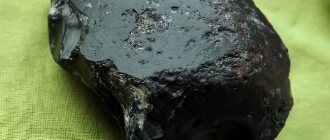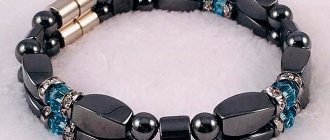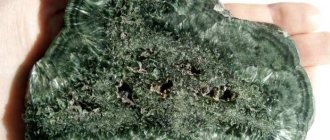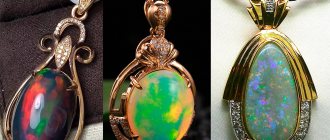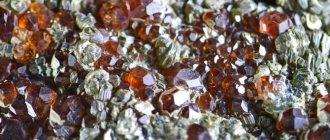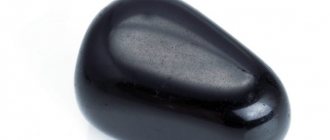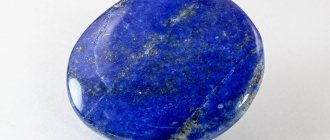Muscovite is a layered potassium silicate that belongs to the group of micas and is more commonly seen in the form of colorless white crystals. Sometimes, taking into account additional impurities, the mineral has a green, yellow, pinkish or brown tint. The muscovite stone has healing, magical properties, and also affects various signs of the Zodiac.
Origin story
Since ancient times, transparent muscovite plates have been a sought-after commodity, as they were used as glass. It was supplied to European countries by Russia, which at that time was called Muscovy. It was thanks to this that the Swedish scientist Vallerius in 1747 gave the mineral its official name from English. Muscovite - Muscovy.
In Ancient Rus', transparent muscovite plates were used as glass. They let in light and protected the home from winds and precipitation, but only wealthy people could afford such windows. In Rus', it was allowed to use small sheets sewn together, while large layers of muscovite were exported to European countries.
History of the stone and description
Muscovite is a mineral native to Muscovy. It has been mined since the 15th century. Transparent plates for windows were made from large pieces of rock in Europe. Small samples were used to cut glass into room lanterns and inserts into perforated boxes.
The stone is classified as a potassium aluminosilicate. It is transparent, layered (belongs to mica), with a glassy luster with a pearlescent tint. It comes in silver white, gray, yellow, brown, green.
Types of muscovite:
- fuchsite;
- sericite;
- phengite;
- mariposite;
- ellacherite;
- alurgitis;
- damurite;
- gumbelite;
- roscoelite;
- gilbertite.
The mineral is of pegmatite origin. Formed in acidic rocks. Muscovite is accompanied by spar, quartz, and topaz. Deposits have been discovered in Karelia, India, Saxony, Norway, and Canada.
See what one type of mineral looks like:
Varieties of mineral
Mica muscovite
Based on its structure and chemical composition, muscovite is divided into the following varieties:
- Sericite is a fine-scaled light mineral of metamorphic origin with a fine-grained structure and silky shine;
- Phengite is a type of muscovite with a ratio of silicon and aluminum in an increased proportion of 3:1, which leads to the replacement of aluminum in octahedral positions by magnesium and iron;
- Alurgite – phengite with a high manganese content;
- Mariposite – phengite with a high chromium content;
- Gumbelite is a type of magnesian fibrous muscovite of hydrothermal origin;
- Illite – mica minerals or rocks in which mica interlayers with clays;
- Damurite is a dense, fine-scaled type of white muscovite, which is the parent rock of staurolite and kyanite;
- Gilbertite is a green mineral that forms in ores and pegmatites and has a cryptocrystalline structure;
- Roscoelite is the rarest type of muscovite, with olive, brown, black hues and iridescent edges.
- Fuchsite is a scaly, dense green mineral with a bright shine and an original pattern. Visually, fuchsite is similar to agate and aventurine; it is often used in crafts and jewelry making.
Known deposits
High quality muscovite with distinctive characteristics is mined mainly in the USA, India, Canada (this includes the states of Bihar, Anzra and Rajasthan), Sweden, Norway, Switzerland, Austria, Finland, and Pakistan.
In Russia, the most famous mining sites are located in Eastern Siberia (Mamskoye and Kanskoye), on the Kola Peninsula, the Urals, Karelia and Irkutsk.
Mica deposits of the metamorphic type are mined mainly in Ukraine.
The magical properties of muscovite
Depending on the color of muscovite, its magical power is directed to different areas of a person’s life. For example:
- The mineral of yellow and brown shades serves as a talisman of good luck, attracting material well-being and success in endeavors to its owner.
- Stones of gray and white shades serve as an effective amulet on the road, especially in the winter months, protecting the traveler from frost and cold.
- Pink muscovite is considered a symbol of love, the search for new feelings or the revival of faded tenderness.
- The green mineral is necessary for those who decide to change their disposition, gain calmness, confidence and nobility.
Muscovites of all colors and shades protect their owner from injury, violence and emergency situations, and also protect him from evil people and nonsense.
Emergence
There are a number of methods for the appearance of muscovite:
Magical emergence. The mineral is found in vein layers of igneous origin. And this is by no means formed in the flowing layers. Subsequently, the freezing of medium and acidic magmas accentuates the mineral. It is considered a rock-forming component of some of the upper layers (roughly granite). Then the mineral begins to spread throughout the entire space of the pegmatite (the reproduction sphere of the “main” layer) or is folded into a nest (they can reach 1.5-2 m).
Metamorphic emergence. With an intrusive combination (mineral concentration of high igneous layers formed in the depths of the earth's strata) and upper layers.
In layered clays and clayey sediments. They arrive there as a result of the formation of extinction. Under the influence of wind, small inclusions of muscovite in exposed areas exfoliate and disintegrate into small particles. If the disappearance is chemical, the mineral can switch to other substances.
Medicinal properties
Muscovite is a component of many types of clays that are successfully used in cosmetology and dermatology. It has a beneficial effect on the skin, curing it from peeling, itching, lichen and dermatosis. The mineral is able to get rid of teenage acne and pimples, relieve inflammatory processes, restoring freshness and beauty to the skin.
The stone has a positive effect on the human endocrine system. For patients with an enlarged thyroid gland and unstable hormonal levels, lithotherapists recommend wearing a bracelet with muscovite. Back to contents
Variety
Sericite is a compact, fine-scaled, bright mineral with a delicate shine. “Sericos” in Greek is smooth, acceptable with the most significant appearance of silica, under these conditions it can be intermediate in relation to phengite K (Fe, Mg) Al [(Al, Si) Si3O10] (OH, F) 2.
Fuchsite is a fine-scaled, bright green (chrome) mineral. Cr2O3 up to 4.8%;
Ellacherite is a mineral of barium (Co, Ba) (Al, Mg) 2 [AlSi3O10] (OH, F) 2 Co BaO up to 10%.
Gilbert is a light yellow mineral with small pegmatites and mineral veins.
Applications of muscovite
The mineral is a natural raw material for the extraction of mica, which is used in many industrial sectors. This is a durable and resistant dielectric, which is used in electronics, complex power plants, in the production of telephones, capacitors, insulators and electrical equipment.
In the chemical industry and metallurgy, mica is used to make windows in furnaces. It is also used in the production of glass for cars and membranes for gramophones.
Mica powder is in demand in the construction and woodworking industries. It is found in roofing felts, grinding stones, fire-resistant enamels, wallpaper, cardboard and paper, as well as lubricants and car tires.
Muscovite is processed as a cabochon and inserted into jewelry - rings, pendants, pendants, earrings and bracelets. It looks good in metal frames and also goes well with leather and wood. Collectors are interested in stones of Brazilian origin.
Beneficial Use
The main areas of use of muscovite are mechanical engineering, radio electronics and electronics industry.
There are a number of important alternatives for the use of solids.
Insulator (the mineral has excellent electrical insulating properties). For this case, flat mica is used. Depending on the volume of the plates, their color and additives in the solid, they are used in the formation of electric lamps, kerosene, mica glasses, steam generators or telephone sets.
Mica powder is used for making fire extinguisher, refractory structures, fireproof paints and clay makings. It is also used for the production of mica cardboard, wallpaper, explosive elements, used transmission products and others. The pigment is made from pieces of flat mica.
Formation of blanks. Approximately mikanit. Made from crushed remains of flat mica, muscovite products, already used and other micaceous remains. The method of making micanite involves joining individual pieces of shellac and compressing them under enormous pressure.
Physical and chemical properties
The properties of the mineral are largely due to its layered structure. First of all, the following distinctive features can be highlighted:
- high cleavage;
- flexibility;
- elasticity;
- strength;
- the dielectric constant.
Different types of mica have different chemical properties, which largely determine its use. Thus, muscovite has a heat resistance of 400 – 700 ºС, and phlogopite – 200 – 800 ºС. The density of muscovite is 2.6 – 2.8, phlogopite – 2.3 – 2.8. The coefficient of thermal expansion for muscovite is 19.8, for phlogopite - 18.3. The melting point also depends on the chemical composition and varies between 1,140 – 1,400 degrees.
The physical and chemical properties of mica determine its scope of application. It is widely used both in industry and in everyday life.
Location
There was an ancient mica trade in the north-west European part of Russia. Deposits in Karelia were known back in the 15th century. Mica-bearing pegmatite deposits are located among granites, gneisses, mica schists and other metamorphic rocks.
Muscovite is associated with feldspars, quartz, and to a lesser extent with schorl, apatite and other minerals. Mica deposits are common in the Mamsky region of Eastern Siberia. A wide mica-bearing strip of metamorphic schists is bounded by granite massifs in the northwest and southeast.
Crystals of muscovite (sometimes up to 50 cm) with a reddish or yellow-greenish tint are observed in paragenesis with acidic plagioclases, microcline, quartz, biotite, in some cases with black tourmaline, apatite, garnet, etc. Mica is completely transparent, easily splits into thin sheets with a flat, smooth surface.
There are also deposits in India (states of Bihar, Rajasthan, Andhra) and Brazil (Minas Gerais). Commercial deposits of muscovite are found mainly in pegmatites.
